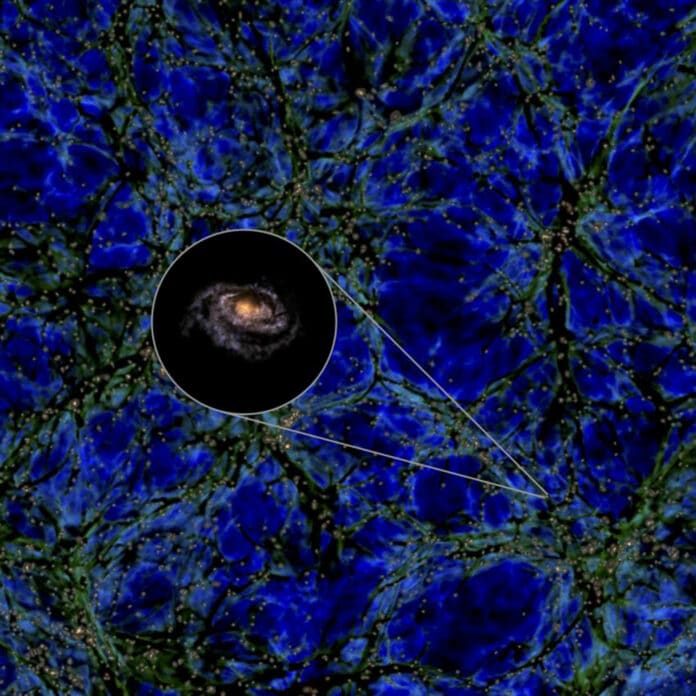The Milky Way and the Local Sheet form a peculiar galaxy system in terms of the unusually low-velocity dispersion in our neighborhood and the seemingly high mass of the Milky Way for such an environment. Using the TNG300 simulation, an international team of astronomers searched for Milky Way analogs (MWA) located in the cosmological walls.
A cosmological wall is a flattened arrangement of galaxies that surrounds other galaxies and is distinguished by exceptionally vacant areas on either side of it, known as “voids.” The flattened arrangement is produced by these voids squashing the galaxies together into a pancake-like structure.
This wall environment, in this case, known as the Local Sheet, has a more organized effect on the rotation of the Milky Way and adjacent galaxies around their axes than it would have if we were in a random location in the Universe without a wall.
Typically, galaxies tend to be significantly smaller than this so-called wall. The study revealed that the Milky Way is too big for its “cosmological wall,” something yet to be seen in other galaxies. This is a rare cosmic occurrence.
As a part of the IllustrisTNG project, the team simulated a volume of the Universe, nearly a billion light-years across, that contains millions of galaxies. There were very few galaxies in the simulation that were as “special” as the Milky Way, as large and entrenched in a cosmic wall as the Local Sheet, or even as few as one-millionths of all the galaxies.
The team believes it may be crucial to consider the unique environment surrounding the Milky Way when running simulations to avoid what is known as a “Copernican bias” in concluding the galaxies in our neighborhood. This bias would result from presuming that our location in the Universe is fully average. It describes the gradual erosion of our unique status during the almost 500 years since Copernicus demoted the Earth from being at the center of the cosmos.
To simulate observations, astronomers sometimes assume that any point in a simulation such as IllustrisTNG is as good as any. Still, the team’s findings indicate that it may be essential to use precise locations to make such measurements.
Research lead Miguel Aragón said, “So, the Milky Way is, in a way, special. The Earth is very obviously special, the only home of life that we know. But it’s not the center of the Universe or even the Solar System. And the Sun is just an ordinary star among billions in the Milky Way. Even our galaxy seemed to be just another spiral galaxy among billions of others in the observable Universe.”
Joe Silk, another of the researchers, said, “The Milky Way doesn’t have a particularly special mass or type. There are lots of spiral galaxies that look roughly like it. But it is rare if you take into account its surroundings. If you could see the nearest dozen or so large galaxies easily in the sky, you would see that they all nearly lie on a ring embedded in the Local Sheet. That’s a little bit special in itself. We newly found that other walls of galaxies in the Universe like the Local Sheet very seldom seem to have a galaxy inside them that’s as massive as the Milky Way.”
Aragón said, “You might have to travel half a billion light years from the Milky Way, past many, many galaxies, to find another cosmological wall with a galaxy like ours. That’s a couple of hundred times farther away than the nearest large galaxy around us, Andromeda.”
Dr. Mark Neyrinck, another team member, said, “You do have to be careful, though, choosing properties that qualify as ‘special. If we added a ridiculously restrictive condition on a galaxy, such as that it must contain the paper we wrote about this, we would certainly be the only galaxy in the observable Universe like that. But this ‘too big for its wall’ property is physically meaningful and observationally relevant enough to call out as really being special.”
Journal Reference:
- Aragon-Calvo et al. The Unusual Milky Way-Local Sheet System: Implications for Spin Strength and Alignment. Monthly Notices of the Royal Astronomical Society: Letters. DOI: 10.1093/mnrasl/slac161
